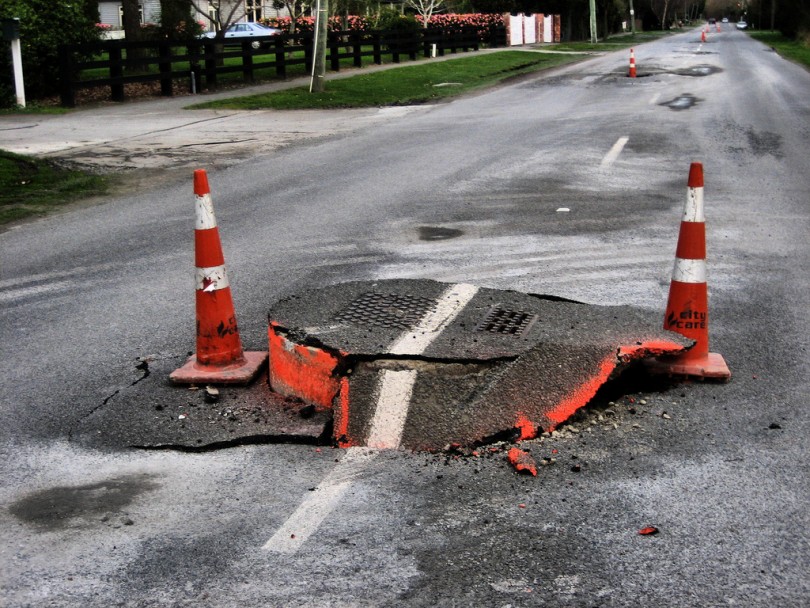AND’s SkewedNews — Want to experience the terror of an earthquake without the danger? Now you can. A small startup in Oklahoma is making it possible to get your day interrupted by a genuine earthquake, ranging anywhere from a mild tremor to a serious building-shaking shock.
Pensicola Shale, a Tulsa, Okla. based fracking company will be begin taking bookings for “Shake Us,” billed as a real life ride like no other.

Once work is completed on Mayberry, Okla., a town built from the ground up to heighten the sensations from earthquakes, tourists can book a stay at the Mayberry Inn. The town’s diner will have low hanging — yet well secured — swinging lights, and the mini-mart will have floor to ceiling cans of various fruit assembled into large pyramids. A bridge, which is kept a safe distance from visitors, will eventually collapse.
“We can’t have a bridge collapse every day, of course,” said Beth Mignolo, spokesperson for Pensicola Shale. “But it will go at some point in the summer. Each successive shock will weaken it.”
Advancements in Seismic Science
Not too long ago geologists were hard pressed to predict where and when an earthquake would strike. They tried looking for historical patterns in Earth’s layers, measuring the movement of massive and adjoining tectonic plates and have, at best, developed a reasonable certitude of a 30-year window, but the size and strength of such earthquakes were still a mystery.
Now, with help coming from an unlikely source (fracking), geologists are not only able to predict earthquakes, but schedule them as well.
The Tulsa-based fracking company discovered this odd byproduct of pulling oil from shale by chance. By using different amounts of water and blasting at different depths, it could dial up earthquakes on demand.
Fracking — or hydraulic fracturing — is the science of extracting oil from rock by injecting large volumes of water deep underground. What geologists and area residents noticed were the number of small- to medium-sized earthquakes that cropped up in the areas where fracking took place.
Oklahoma, a region not known for significant seismic activity, saw a huge spike in tremors, going from just a handful to hundreds in the last decade.
Mignolo told me that the region has gone from one or two 3.5 seismic events in a year to more than a dozen. A 3.5 Richter scale measurement is typically the level at which an average person can feel an earthquake.
Mignolo said,
We cannot get the event down to the exact minute. But we have narrowed it down to an 18 hour window and for most visitors that’s tight enough to fit into their vacation schedule while still adding a sense of unpredictability.”
Earthquake creating is extensible. You don’t need to be drilling for oil to create one. Anywhere you want to create earthquakes, just begin the fracking process. No oil will come from it, but that’s hardly the point.
Work on the small town should be completed in 2016.
For aNewDomain’s SkewedNews, I’m Dino Londis.
First image: Yamabe Bridge Earthquake. Wikimedia Commons
Featured image: Earthquake damage by Martin Luff via Flickr













